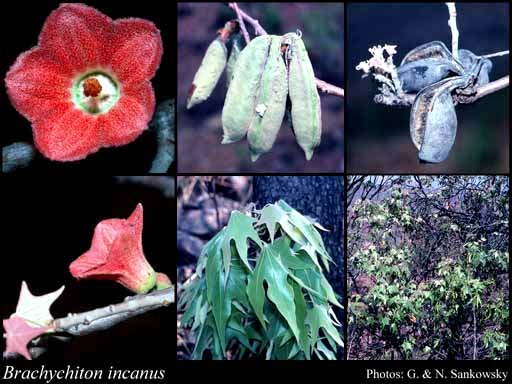- Reference
- Horsf.et al., Pl.Jav.Rar. 234 (1844)
- Conservation Code
- Priority Three
- Naturalised Status
- Native to Western Australia
- Name Status
- Current
Tree, 4-6(-15) m high. Fl. red/pink-red, Jul to Sep. Sandy soils over sandstone or quartzite. Rocky slopes, scarps & ridges.







Scientific Description
Tree, with glabrous stems. Leaves 100-385 mm long, 80-160 mm wide, palmately lobed, simply (once-)lobed; margins entire; hairy, with stellate hairswith scales absent, Sessile glands absent; stipules present but early deciduous (only visible on youngest leaves). Perianth of one whorl only (the visible whorl is a calyx, sometimes petaloid). Calyx pink or red, Sessile glands absent, stellate hairs present, scales absent. Stamens many. Ovary; styles several, free and separate, arising from the summit of the ovary, 4-5 mm long, with five style branches or lobes, hairy for most of length, wing absent. Fruits indehiscent and splitting into sections (schizocarps), length-width ratio at least 1.5 times as long as wide, mericarps smooth, hairs and scales absent; apex rounded; prickles absent (except perhaps a terminal awn); terminal awns or spines absent; calyx deciduous before maturity, not accrescent; carpels 5; seeds per loculus 2-4 or ≥5. Flowering time July, August or September. Distribution Botanical Province Northern, IBRA Bioregion North Kimberley, Victoria Bonaparte and Central Kimberley. Conservation Code Priority Three (P3).
Distribution
- IBRA Regions
- Central Kimberley, Northern Kimberley, Victoria Bonaparte.
- IBRA Subregions
- Berkeley, Keep, Pentecost.
- Local Government Areas (LGAs)
- Wyndham-East Kimberley.